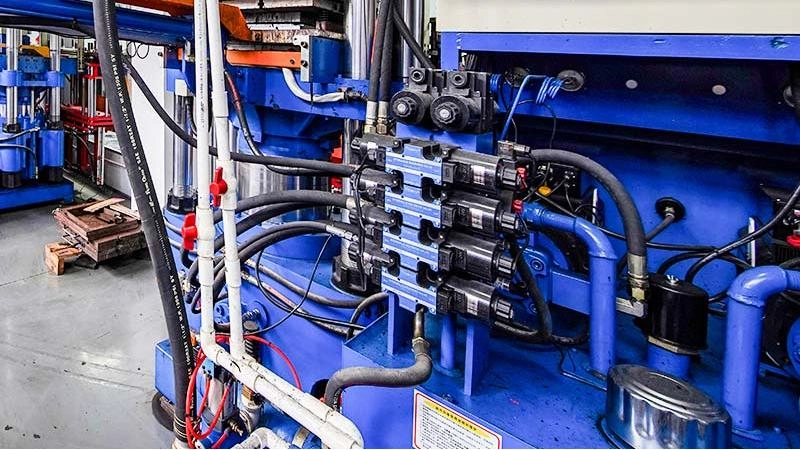Robotics has come a long way. New ideas are pushing what machines can do. One cool breakthrough is liquid robots. These robots act a lot like living cells, changing shape and adapting. People are excited about this technology because it could be used in tough places or in medicine. Liquid robots mix the ability to shift shape with staying sturdy. They’re a big step forward in robotics. Silicone is super important in these robots. It makes them work better and adapt easily.
![]()
What Is a Liquid Robot?
A liquid robot is a fresh take on robotics. It combines liquid and solid traits to do unique things. Researchers from SNU-GU built a liquid robot that can change, split, and join like living cells. These robots are wrapped in water-repelling particles. This helps them hold their shape but still flow. This smart design lets them squeeze through tight spots, grab objects, or team up with other robots.
Being flexible yet strong is key to how they work. Silicone is a big part of this balance. It’s stretchy, handles heat well, and doesn’t react to much. Silicone lets the robot adjust to different situations without falling apart. Its makeup keeps it tough and safe from damage.
Work by Seoul National University (SNU) and Gachon University (GU) shows these robots can handle tricky or dangerous places. This could be huge for exploring harsh areas or medical robotics. For example, they can slip through metal bars. This shows they can do things regular robots can’t.
Applications of Liquid Robots
Liquid robots could be used in tons of ways across different fields. One big area is medical robotics. Their flexibility makes them great for delivering drugs right where they’re needed. They could move through complex body pathways or bring medicine to specific spots. This might change how we treat illnesses.
They’re also great for disaster response or exploration. Liquid robots can shift shape and adapt. This makes them perfect for moving through rubble or tight spaces in rescue missions. They can even join up with other robots to solve problems together in tough spots.
Researchers are also trying to make liquid robots even better. They’re working on using sound waves or electric fields. These could give better control. This would open up even more uses.
Silicone is a game-changer in these robots. It’s tough and versatile. It helps them stay strong even in extreme conditions, like super-hot or corrosive places.
In the end, liquid robots are a huge deal in robotics. Using materials like silicone and ideas from living cells, researchers made machines that can do stuff we never thought possible. As this tech grows, it’ll likely make a big difference in healthcare and disaster response. It’s both practical and super adaptable.
Silicone and Liquid Robots
The Functionality of Silicone in Liquid Robots
Contribution to Structural Integrity
Silicone is key to keeping liquid robots solid. These machines blend liquid and solid qualities to tackle tough tasks. SNU-GU researchers made a liquid robot that shifts, splits, and merges like living cells. Silicone helps them stay in shape while being flexible.
Silicone’s traits, like handling heat and resisting damage, make it perfect for this. It can take extreme heat or harsh conditions. This lets liquid robots work well in tough spots. This is super important for things like disaster response or exploration, where other materials might break. Silicone’s stretchiness and strength give a solid base. It still lets the robot change shape.
Plus, silicone doesn’t react to much. This helps liquid robots last a long time. It stops chemical breakdown. This makes them reliable for medical uses or rough industrial settings.
Role in Movement and Adaptability
Silicone has a big impact on how liquid robots move and adapt. They’re covered in water-repelling particles. This mixes flexibility with strength. Silicone adds the stretchiness needed for smooth shape changes. It also keeps the robot together.
One awesome thing about liquid robots is how they slip through tight spaces or past obstacles. This design lets them squeeze through, grab stuff, or join with other robots. Silicone’s flexibility makes this possible. It lets the robot stretch, shrink, or reshape as needed. This is huge for things like delivering drugs or rescuing in tight spots.
Silicone also helps robots merge with others smoothly. This means they can team up in tricky places. For example, multiple robots could work together to clear debris in a disaster or deliver medicine better.
Silicone’s versatility also helps with new control ideas. Researchers are looking at sound waves or electric fields. The team is working on ways to improve the robots using these. Silicone responds well to these signals. This could lead to sharper, more lively movements.
Enhancing Durability and Longevity
Durability matters a lot for robots, especially in tough or risky places. Silicone makes liquid robots last longer by resisting wear. Its strong structure holds up under stress or harsh conditions.
In medical uses, sterilization uses high heat or strong chemicals. Silicone’s toughness is a must here. It lets robots be reused safely without losing their shape or performance. In industrial settings with corrosive stuff, silicone acts like a shield. It keeps the robot safe.
Silicone’s reliability also cuts down on maintenance. It doesn’t break down easily over time. This lets robots keep working with little upkeep. This is great for long missions, like exploring space or underwater.
Silicone also stays strong in all kinds of temperatures. Whether in freezing cold or blazing heat, liquid robots with silicone parts keep doing their job without issues.
![]()
Silicone is a core part of liquid robots. Company like Casinda can provide such silicone too. Silicone is not just about holding them together. It helps them move, adapt, and stay tough in rough conditions. With its heat resistance, stretchiness, and chemical protection, silicone makes these robots game-changers.
This tech could shine in exploring extreme places or medical robotics. As work continues, especially with new control ideas like sound waves or electric fields, liquid robots will have even more uses.
Thanks to silicone’s many strengths, it boosts what liquid robots can do. It also sets the stage for amazing solutions in fields like healthcare and disaster response.
Perguntas frequentes
Q: Why is silicone important in liquid robots?
A: Silicone is key because it’s stretchy, heat-resistant, and doesn’t react to much. It helps liquid robots stay strong, adapt to different conditions, and last longer without breaking down.
Q: How does silicone help liquid robots in tough conditions?
A: Silicone resists extreme heat, cold, and corrosive stuff. This makes it perfect for robots working in harsh places, like disaster zones or industrial settings, without losing their shape or function.
Q: What makes silicone good for medical applications?
A: Silicone is tough and doesn’t react to chemicals or heat. It can handle sterilization processes, so liquid robots can be reused safely in medical tasks like drug delivery.






